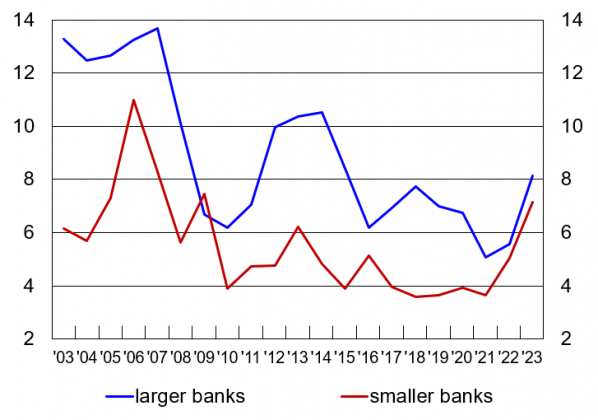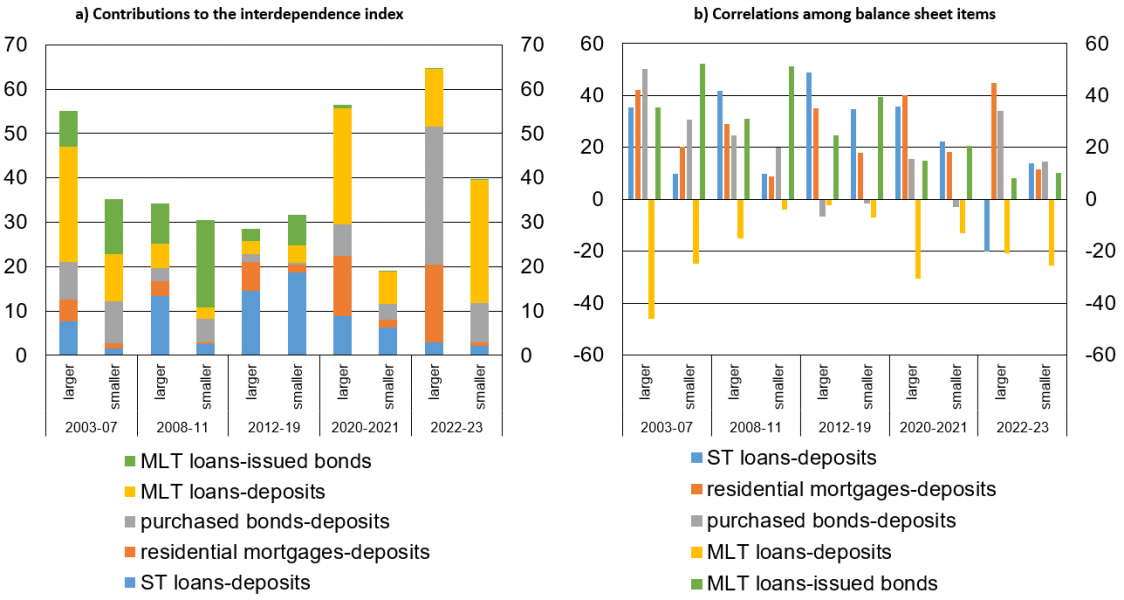References
Bank of Italy (2012). Financial Stability Report No. 4.
Bologna, P. (2018). Banks’ maturity transformation: risk, reward, and policy. International Monetary Fund Working Paper N. 45.
Carletti, E., F. De Marco, V. Ioannidou, and E. Sette (2021). Banks as patient lenders: Evidence from a tax reform. Journal of Financial Economics, 141(1), 6-26.
DeYoung, R., and C. Yom (2008). On the independence of assets and liabilities: Evidence from US commercial banks, 1990–2005. Journal of financial stability, 4(3), pp. 275-303.
Drechsler, I., A. Savov and P. Schnabl (2021). Banking on deposits: maturity transformation without interest rate risk. The Journal of Finance, 76, 3, pp. 1091-1143.
Michelangeli, V., and F.M. Piersanti (2023). Interdependence between assets and liabilities in the banking system: changes in the last two decades. Bank of Italy, Occasional Papers (Questioni di economia e finanza), N. 752.
Segura, A., and J. Suarez (2017). How excessive is banks’ maturity transformation?. The Review of Financial Studies, 30(10), 3538-3580.






